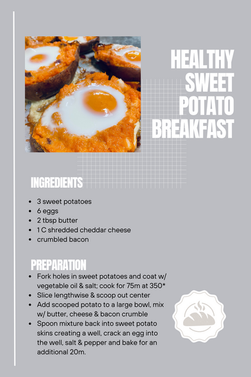8 Steps to Financial Freedom
- Lauren Elizabeth

- Feb 22, 2023
- 9 min read
Updated: Feb 22, 2023
This post may contain affiliate links. All opinions are my own.
So, you're here! You're ready to get a hold of your financial life. Did you know that 72% of people stress about money?! That means you're not alone (not that that's any more comforting), but who can blame you?
The market is rough right now. The cost of living has skyrocketed in the past few years, while our salaries are essentially staying the same. Between the inflated housing market & interest rates, all time high student loans, or even just trying to buy $8 eggs at the grocery store (at the time of writing this, yes, a dozen eggs are $8), just living paycheck to paycheck can feel next to impossible. And if you want to buy a house, forget about it! You may think that at this rate you'll never be able to buy, but I'm here to tell you that's not true. You can buy a house. It may take you a little longer if you're in debt, but I will help you get there.
It's time to start now though. Don't waste another day.
First thing first.
It is important that you follow these steps in order.
DO NOT SKIP AROUND.
1. You Need Health Insurance.
I know you may be thinking that this belongs at the bottom of the list, I mean, why should we start here!? We want financial freedom, a cushy savings account, and to maybe even be able to buy a house at the end of this, right?! But insurance is very important. One awful accident or diagnosis and you can fall so far into the hole that you'll never be able to get out.
If you already have health insurance, perfect! But you may still benefit from reading this step.
When looking into health insurance (whether it's through your employer or on your own), you must first consider the cost, coverage, and deductible. The deductible is the amount you will owe out-of-pocket before the insurance kicks in and starts paying for your coverage.
In the United States, if you are under the age of 26, you are eligible to stay on your parents health insurance. Some states may actually let you stay on longer than 26 though (New York children, for example may stay on their parents policy until the age of 30 if unmarried & eligible).

*Check with your states laws to see if you qualify.
Another way to receive insurance is through your spouse. And if you aren't yet married but are living together, inquire if your company allows domestic partners be covered. You'd be surprised at how many do!
If none of the above options work for you, it's time to shop around for your own individual policy. Compare plans by visiting healthcare.gov, ehealthinsurance.com or by visiting your own local private insurance companies.
2. Pay Off Your Debt
The second thing you must do is pay off your debt. There's a method to this though. Don't just start paying off all of your debt in any order. In fact, there may be certain situations where skipping this step (or certain debts) may be preferred.
First, you want to pay off your highest interest debt. Do this before you even start putting money aside towards savings! Think about it. If you're paying an APR of 17%, paying off that debt is actually saving you 17% of that total debt (which is equivalent to earning 17% on an investment!). This idea may be a little hard to wrap your brain around, and we will go into more detail about this another time, but take my word for it. Pay off your highest-interest-rate debt first. You won't find a savings account that will earn you 17% interest, but paying off your credit card will guarantee that 17% savings.
You can also call your credit card company and request a lower interest rate. You'd be surprised at how many times this actually works. If that doesn't work and you are still stuck with a high interest rate, check out creditcards.com or wallethub.com to find a lower-interest-rate card. You can then transfer your high-interest debt to your new lower-interest card.
Next, continue to pay off your debt in descending order. Continue down the chain until all of your debt is paid off or if your highest owed interest-rate is now lower than what a high-yield saving account can offer you (for example: invest in a 401(k) with employee matching instead of paying off your entire low-interest student loans).
Hot Tip: contact your student loan provider to request a new repayment plan that has an extended payback period. This will lower your monthly payments, giving you more money to put towards your high-interest debts.
3. Plan For Retirement
Yes, this is the next important thing after getting health insurance and paying off debt. You may think it's silly to save money for the future when you need money now, but this is one of the smartest things you can do for yourself and your future.
This is especially true if your employer offers 401(k) match. This means that for every dollar you contribute into your 401(k), your employer will match all (or a portion) of your contribution (up until a certain percentage). This is essentially free money! With a deal like this, this may be even more important than paying off your high-interest debts. If your employer is going to match 50%-100% of your contribution, that's a 50%-100% return rate! That is way more than your 17% interest-rate-worth of savings. As of 2023, the max 401(k) contribution allowed is $22,500 a year. If your employer has a limit on how much they will match annually, I highly suggest taking advantage by contributing the max match amount allowed per year.
Please note, you will note be able to start pulling out of your retirement plan (without penalty) until you are 59 1/2.
If you are self-employed or work at a job that doesn't offer a 401(k), that doesn't mean you can't start saving for retirement. In this case, an IRA account would be beneficial to you. As of 2023, the max annual IRA contribution allowed is $6,500.
If you're looking into a Roth IRA, it's good to note that you will not be penalized for withdrawing the money early. However, you won't be eligible to withdraw the interest earned until after the age of 59 1/2.
4. Start Saving For Emergencies
I know this is usually at the top of people's lists, and it's weird to see it as number 4, however, you need to take care of your debt and your future before you start saving for a rainy day emergency. A great savings goal is 3-6 months worth of living expenses.
A great way to save up is by having money automatically withdrawn into a savings account once a month. Opening up a savings account at an online-only bank will typically give you a higher interest rate than in-person banks.
Another way to save up for an emergency fund is through investing in money markets. These are generally considered safe investments and offer higher yield returns. Check out bankrate.com & forbes.com to compare which money market account is best for you.
5. Invest in Stocks & Bonds
Now that you have your emergency savings saved up, you can start investing your "extra" money. Do not invest money that you absolutely need to survive off of.
Making your money work for you is one of the best kept secrets of the financially free. Both stocks and bonds will provide you with a high return rate over time (if invested properly). These investments are more risky than savings accounts, but they also have greater earning potential.










Comments